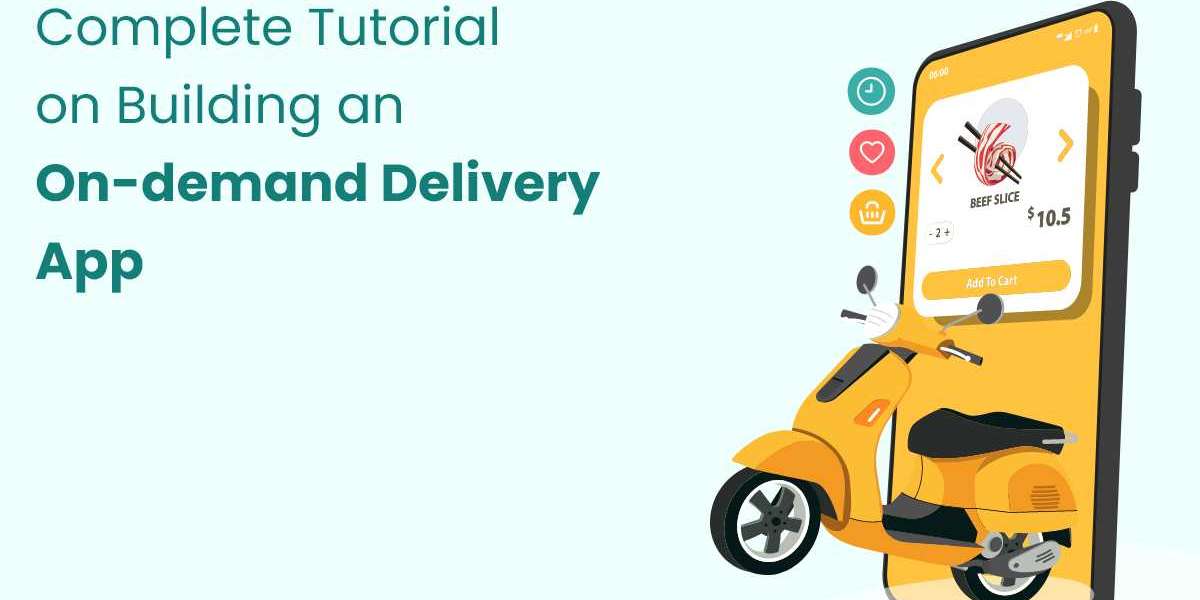Building an on-demand delivery app involves a series of strategic steps, from conceptualization to launch and beyond. This comprehensive tutorial will guide you through the essential stages of developing a successful on-demand delivery app, whether it's for food, groceries, parcels, or any other service.
1. Market Research and Idea Validation
The first step in building an on-demand delivery app is conducting thorough market research. Identify your target audience, understand their needs and preferences, and analyze the competition. Look for gaps in the market that your app can fill or areas where you can offer a unique value proposition (UVP).
Validate your app idea by gathering feedback from potential users through surveys, focus groups, or pilot testing. This process will help you refine your app concept and ensure it resonates with your target market.
2. Define Your App's Unique Value Proposition (UVP)
Based on your market research, define what sets your app apart from competitors. Your UVP could be faster delivery times, a wider selection of products or services, competitive pricing, exceptional customer service, or innovative features like real-time tracking and personalized recommendations.
Your UVP should address a specific pain point or fulfill a unique need within your target market. It should be clear and compelling enough to attract and retain users in a competitive landscape.
3. Choose Your Delivery Model
Select a delivery model that aligns with your business goals and resources:
- Aggregator Model: Partner with multiple service providers or vendors to offer a variety of products/services through your app.
- Logistics Provider Model: Manage the entire delivery process, from order pickup to final delivery, using your own fleet of drivers or couriers.
- Hybrid Model: Combine aspects of both aggregator and logistics provider models for flexibility and scalability.
The delivery model you choose will influence your app's architecture, backend infrastructure, operational strategy, and cost structure.
4. Outline App Features and Functionality
Based on your chosen delivery model and UVP, outline the core features and functionalities your app will offer:
- User Registration and Profiles: Simplify the signup process with options for social media integration and email verification.
- Product/Service Listings: Display clear and detailed descriptions, images, and prices for products or services available for delivery.
- Order Placement and Tracking: Provide an intuitive interface for users to place orders, select delivery options, and track the status of their deliveries in real-time.
- Payment Gateway Integration: Securely process payments through multiple payment gateways and offer options like credit/debit cards, digital wallets, or cash on delivery.
- Rating and Review System: Implement a feedback mechanism for users to rate their delivery experience and leave reviews, which helps build trust and improve service quality.
- Push Notifications: Send timely alerts to users regarding order confirmations, status updates, promotions, and personalized offers.
- Customer Support: Offer in-app chat support or a helpdesk system to resolve queries and issues promptly, enhancing user satisfaction.
Consider incorporating advanced features such as AI-driven recommendations, predictive analytics for demand forecasting, or augmented reality (AR) for product visualization if they align with your business objectives and enhance user experience.
5. Design a User-friendly Interface (UI/UX)
Collaborate with experienced UI/UX designers to create an intuitive and visually appealing design for your app. Focus on usability, simplicity, consistency across platforms (iOS, Android, web), and accessibility to ensure a seamless user experience. A well-designed interface enhances user engagement and encourages repeat usage of your app.
6. Develop a Scalable Backend Infrastructure
Invest in building a robust backend infrastructure capable of handling peak loads and scaling as your user base grows. Consider factors such as server architecture, database management, API integrations (payment gateways, mapping services), data security (SSL encryption, GDPR compliance), and compliance with industry standards.
7. Testing and Quality Assurance
Thoroughly test your app throughout the development process to identify and rectify bugs, usability issues, and performance bottlenecks. Conduct alpha and beta testing phases with a select group of users to gather feedback and make necessary improvements before the official launch.
8. Launch and Marketing Strategy
Plan a strategic launch for your app to generate initial buzz and attract users. Utilize digital marketing channels such as social media marketing, content marketing, influencer partnerships, search engine optimization (SEO), and app store optimization (ASO) techniques to increase visibility and downloads.
Offer promotional incentives, discounts, or referral programs to encourage early adoption and build a loyal customer base. Monitor key performance metrics (downloads, active users, retention rates) using analytics tools and gather user feedback to continuously improve your app's features and overall user experience.
9. Post-launch Monitoring and Iteration
After launching your app, continue to monitor its performance, analyze user behavior, and gather feedback to identify areas for improvement. Regularly update your app with new features, enhancements, security patches, and bug fixes based on user feedback, market trends, and technological advancements.
Conclusion
Building a successful on-demand delivery app requires careful planning, execution, and continuous iteration based on user feedback and market dynamics. By following this comprehensive tutorial and adapting it to your specific business goals and market conditions, you can create an app that not only meets user expectations but also establishes your presence in the competitive on-demand delivery market. Embrace innovation, prioritize user experience, and stay agile to evolve with changing customer needs and technological advancements in the digital era.







